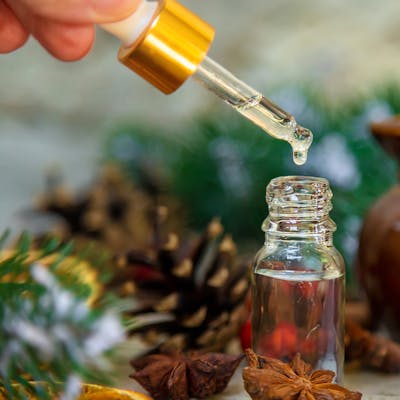Turpentine is the liquid part of conifer resin. It has many virtues, depending on the species of tree it comes from, the region of origin and the way the resin is processed.
It has so many applications in so many different fields that it is essential to be familiar with its different characteristics and representations if we are to make the right choice for our needs.
The different types of turpentine and their names
They can be specified according to their origin, such as ‘Chio turpentine’ also known as Cyprus turpentine or Hungarian turpentine, originally produced from the resin of the pistachio tree, ‘Bordeaux turpentine’ from maritime pine or ‘Venice turpentine’ from larch.
The most widespread is maritime pine turpentine (Pinus Pinaster), known by various names: ‘turpentine’, ‘essence de térébenthine or essence de papeterie’, ‘térébenthine pure gemme’ or ‘huile essentielle de térébenthine’.
These names describe materials with extremely different qualities and uses.
Industrial turpentine
Industrial turpentines are produced on a large scale and used as solvents in the manufacture of paints, varnishes and cleaning products. There are two distinct names for turpentine, reflecting the difference in origin: ‘turpentine essence’ and ‘pure gem turpentine’.
- Turpentine essence
The turpentine found in drugstores comes from the paper industry and should be called ‘paper essence’.
It is made from tall oil, an odorous yellow-black juice obtained after extraction of the products used in paper pulp, containing chemical solvents and sulphur in particular, which often gives it an unpleasant or aggressive odour.
- Pure gem turpentine
This comes from the gum (or resin), unlike that described above, which is harvested from living trees.
It represents several thousand tonnes a year from several countries, for the same applications.
In China, Asia, Brazil and Spain, the resin is harvested using sulphuric acid to stimulate the flow of the gem. The tree in which the acid has been applied secretes resin to protect itself and heal.
This very aggressive harvesting method harms the fauna and flora, as well as the operator himself, and degrades the quality of the resin released.
It is used for the same applications as turpentine, but does not reflect a precise quality. It is not easy to trace, as it is usually a mixture and may contain allergenic molecules such as dêlta 3 carene.
European Pharmacopoeia (Ph.Eur.) quality or officinal turpentine
- Pharmaceutical grade turpentine or essential oil of turpentine.
It is available in pharmacies or organic shops. It is chemotyped, i.e. associated with the botanical name of the tree and designates the active molecule(s) present in the majority of the essential oil - in particular alpha and beta pinenes, whose properties have been extensively studied.
This is 100% natural maritime pine turpentine, not always eco-certified and harvested using the traditional sulphuric acid process.
The recognised properties of natural maritime pine turpentine
Turpentine is appreciated and widely used for its aromatic properties and its relaxing and stimulating effects. Its anti-inflammatory properties also make it a key ingredient in certain muscle and joint care products.
Used in aromatherapy, it has been known for centuries for its antiparasitic, analgesic, revulsive, disinfectant and antispasmodic properties.
How can you recognise genuine natural gem turpentine?
Authentic gem turpentine can be distinguished by several characteristics:
- Its pleasant odour of light, woody pine resin (distinctive). On the other hand, a turpentine made from paper will have a strong, heady and sometimes even sulphurous odour, depending on the residual percentage of treatment products.
- Appearance and colour: it should be clear, almost colourless and limpid (transparent), with no visible impurities.
You can judge its quality by observing the colour of a drop of turpentine on white paper. A good fresh turpentine will not leave any marks or stains, whereas an aged/used or paper-grade turpentine will form a yellow halo around the print.

BioGemme turpentine, developed by Holiste: exceptional quality!
Extracted using our innovative BioGemme process, without the use of sulphuric acid, this product is certified by Ecocert, Agriculture Biologique FR-BIO-01.
It comes from resin harvested from the Landes pine tree, in a special terroir which gives it characteristics linked to the soil and the genetics of the trees - in particular the absence of allergenic molecules such as dêlta 3 carene.
It is naturally composed of alpha-pinenes in a particular optical form known as levogyre (-). This rotatory power gives it olfactory qualities that are highly sought-after in perfumery (woody, fresh, resinous) and as a precursor for the synthesis of other aromatic molecules.
Harvesting is carried out in a closed vessel, with no loss of volatile molecules (no dirt), no degradation of the resin's native quality (no oxidation) and with an environmentally-friendly activator, free from sulphuric acid.
It is gently distilled to preserve the quality of all the molecules of therapeutic interest.
It can therefore be inhaled without risk to health and even ingested in small quantities for an anti-parasite treatment.
Used in the Bol d'air Jacquier under the name Orésine, it has been specifically studied and adjusted to optimise results (obtain the best results).
Over the last 10 years, Pubmed has listed no fewer than 500 studies on turpentine and more than 2,000 studies on its main alpha and beta pinene molecules.
Recently, a doctor of pharmacy published her dissertation on maritime pine turpentine. Development of maritime pine oleoresin - University of Bordeaux - Dissertations
In conclusion, the extreme variety of turpentine qualities has led to a great deal of confusion.
Choosing the right turpentine requires a thorough understanding of the subtle differences between the products available on the market. This is why turpentine is still criticised today.
By recognising the key characteristics and exploring the distinctions between industrial and officinal turpentines, you can make an informed choice, based on the applications you are looking for.


